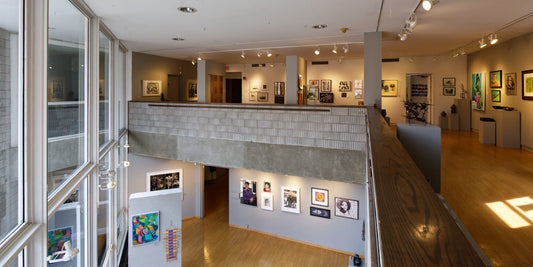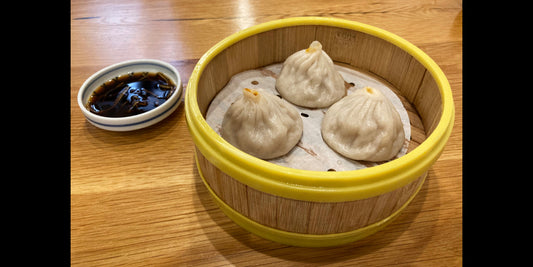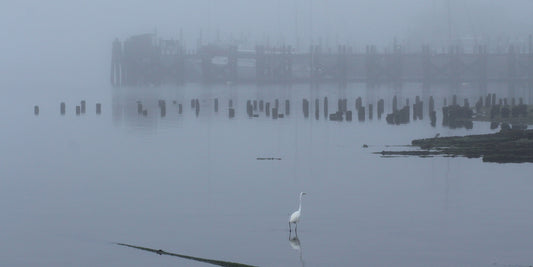At New Haven Pilates in Erector Square, Krista Rea trains her students to pay attention to their bodies as they work out on a combination reformer/tower apparatus. “I want the back torso and the front torso even in length,” she tells them, snapping her fingers. Or, “When your elbows turn in, your lats engage.” Encouraging self-awareness, she asks, “What’s the initial movement when you row?”
When Bill Brown takes Rea’s class in the industrial studio, his awareness is sometimes drawn elsewhere—to “the fingerprints of the machinery and people who built Erector sets and American Flyer trains there 60 years ago.” The studio’s floors are stained and dinged beneath coats of clear varnish and marked by the shadows of missing walls and heavy equipment. Holes in the original wood beams high above look like the work of carpenter bees, but they were actually drilled a century ago to anchor factory equipment.
sponsored by
During a 33-year career spent dreaming up and running the programs at the Eli Whitney Museum and Workshop with his wife and fellow New Haven Pilates student Sally Hill, Brown took several deep dives into the life of A. C. Gilbert, the entrepreneurial inventor who bought a former munitions plant at Blatchley Avenue and Peck Street in 1916, renamed it for his most popular product—the Erector set—and reconfigured it to produce not only his famous toys but also small household appliances, tools, wireless radio sets and, in wartime, Colt .45s, machine gun parts and gas masks.
In Rea’s Pilates studio, housed in the complex’s original building, there’s also, as Brown puts it, “a beautiful symmetry at work.” Gilbert’s passions included sports and outdoor activities; he took part in the 19th-century “physical culture movement” that also included Joseph Pilates, founder of the exercise program that bears his name. Gilbert and Pilates were contemporaries, born just one year apart in 1884 and 1883, respectively. Brown doesn’t know whether the two men ever met, but surely they were simpatico.
Gilbert, the all-around inventor, was also an all-around athlete. He competed in track, wrestling and gymnastics as a student at Yale, excelling in all three, but his claim to fame was as an Olympic pole vaulter. The 1896 revival of the Olympic games was itself part of the movement toward greater physical health and fitness. During tryouts for the 1908 games, Gilbert set a pole vaulting world record of 12 feet 7 ¾ inches; outside of competition, he later reached his greatest height at a Westville Day demonstration jump of 13 feet 2 inches. (The current record stands at 20 feet 3 ¼ inches, due in part to more flexible poles.)
Having qualified for the 1908 London Olympics, Gilbert and his teammates were thwarted at the games by a ruling that pole vaulters could not use a hole in which to set their poles—a technique he and “all other Americans and most other vaulters in the world” used at the time, he writes in his 1954 autobiography, The Man Who Lives in Paradise. His solution? Smuggle a small hatchet into the games and chop a hole in the ground. “I was very considerate,” he writes, “for I dug it to one side so that it could not possibly get in the way of those few who wanted to vault with spikes”—the British method.
An “uproar” ensued, but Gilbert managed to avoid being thrown out of the contest. He was, however, forced to capitulate and vault using a spike. He still beat the competition. Unhappy with the result, as Gilbert tells the story, British judges literally raised the bar. In the end, they orchestrated a tie between Gilbert and his teammate, E. T. Cooke, who insisted that Gilbert take the lone gold medal home. Soon after, it was stolen. Nevertheless, Gilbert profited from his trip abroad. He purchased 50 bamboo poles from a Paris furniture store, shipped them to New Haven, opened “The Yale Bamboo Pole Vaulting Company” and “made a neat profit of more than $1,100 in a very short time and with very little effort.” That “modest capital” set him on his eventual career course.
One vestige of Gilbert’s athletic career is still evident at Erector Square itself, where his third-floor office remains intact. An untouched staircase leads up to his suite, which includes a large oak-paneled room with hand-hewn beams and a fireplace. Two built-in display cabinets still hold an assortment of Gilbert toys. Just off the office are an original bathroom and another space, also paneled in oak. It once served as the inventor-athlete’s private gym.
Another relic can be seen at the Eli Whitney Workshop, where the pole vaulter’s grip strengthener is mounted on the wall. Featuring moving parts that resemble those in Pilates’ apparatus, the contraption includes a pair of handles mounted on round, rotating bases, their tension regulated by tightening clamps on a now missing leather lining. Twisting them would strengthen the wrists. Above these, a lathelike bar of graduated thickness rotates in another plane, building lower arm strength.
When the workshop reopens to the public, hopefully later this fall, visitors will be able to grip and twist this equipment again and, like Rea’s Pilates students, touch a piece of New Haven history.
Written by Kathy Leonard Czepiel. Image 1, featuring Krista Rea during a class at New Haven Pilates, photographed by Kathy Leonard Czepiel. Images 2 and 3 credited to the estate of A. C. Gilbert’s nephew, Charlton Gilbert. Image 4, featuring part of Erector Square, photographed by Dan Mims.








